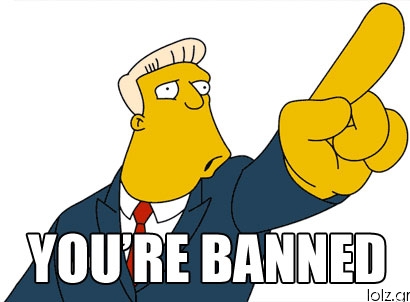Stormy Monday: It's All Jimmy Carter's Fault.

That's what "Mellon Financial Center" attorney John Lanzetta thinks:
In the '70s, Democratic President Jimmy Carter started it off with his efforts at financial deregulation and his Community Reinvestment Act, which encouraged and pressured banks to make loans to those who were theretofore unbankable.That sweater-wearing jerk! Then the big ole' mean government made financial institutions all over the world do crazy things:
Banks, worried about the risks that Democrats had made them take, began hiding risky loans with good loans in complicated security instruments such as credit-default swaps.So society is to blame, government is to blame, and we all turned the banks into victims.
Johnny, whatever happened to personal responsibility?
BTW, before you get all teary-eyed for what Carter did to those nice banks, consider that the opposite is factually correct:
This makes my head hurt -- I'd rather blame the sweater.''There is no evidence that the Community Reinvestment Act was responsible for encouraging the subprime lending boom and subsequent housing bust,'' wrote Luci Ellis, an economist for the Switzerland-based Bank for International Settlements, last month in her working paper ``The housing meltdown: Why did it happen in the United States?''
In her study, which examined the calamity enveloping global financial markets, Ellis wrote that deposit banks covered by CRA ``showed a lesser tendency to write subprime loans than lenders not subject to the act.''
Even if you include subprime loans made by CRA-covered banks and thrifts, the vast majority of the toxic loans stinking up mortgage-backed securities had nothing to do with CRA compliance.
More than half of subprime loans were made by independent mortgage companies not subject to comprehensive federal supervision; another 30 percent of the loans were made by affiliates of banks or thrifts subject to routine examination or supervision, according to congressional testimony given earlier this year by Michael S. Barr, a professor at the University of Michigan Law School.
''The worst and most widespread abuses occurred in the institutions with the least federal oversight,'' Barr testified.
Traiger & Hinckley, a New York law firm that represents lenders complying with CRA regulation, took a look at whether the law encouraged irresponsible lending.
''CRA banks were significantly less likely than other lenders to make a high-cost loan,'' the law firm's report found. When CRA banks did originate high-cost loans, the average APR was appreciably lower than the average APR on high-cost loans originated by other lenders.
Further, CRA banks were more than twice as likely as other lenders to retain originated loans in their portfolio, said Warren Traiger, a partner at Traiger & Hinckley.
''If more lenders were covered by CRA, the crisis would have been mitigated,'' Traiger said in an interview.
The investment banks who purchased, bundled and securitized subprime loans were not covered by CRA, points out Matthew Lee, executive director of Inner City Press, a nonprofit community advocacy group based in the New York borough of the Bronx.


Yorumlar
Yorum Gönder